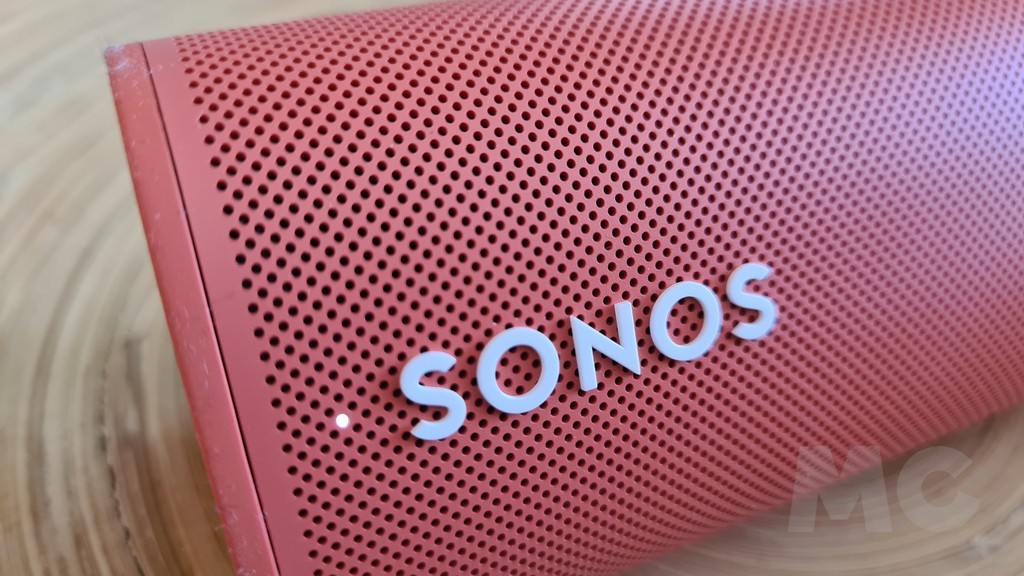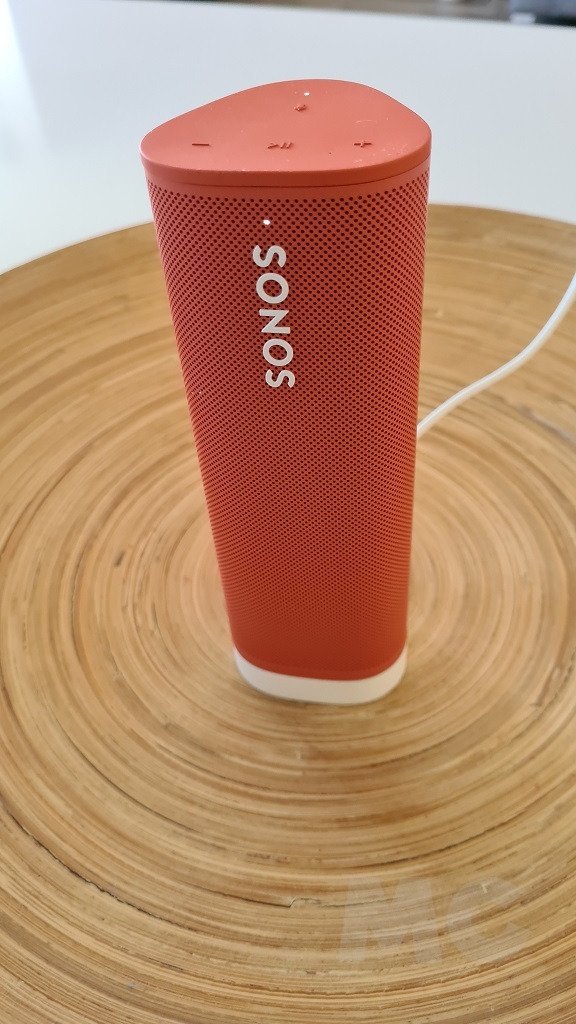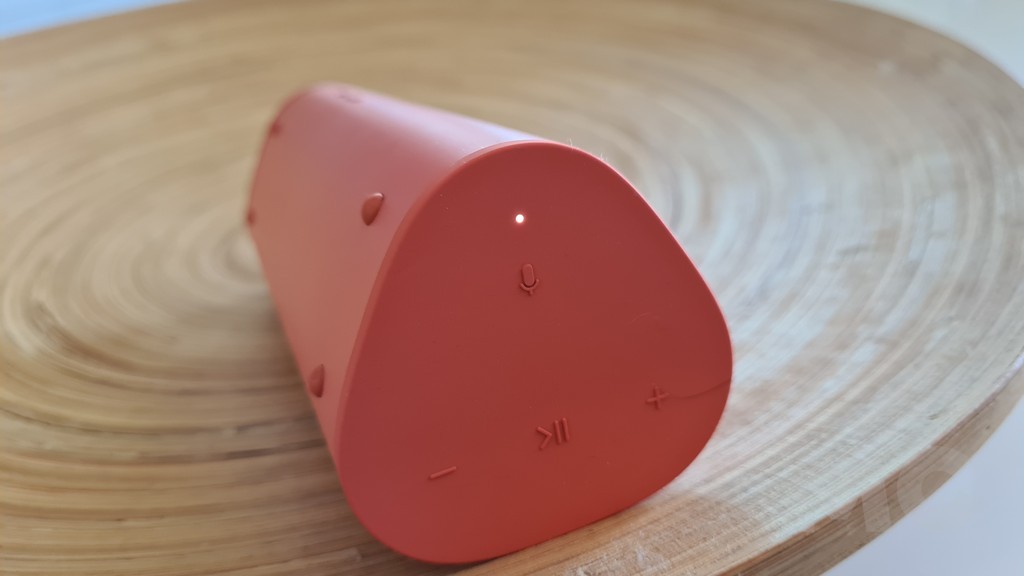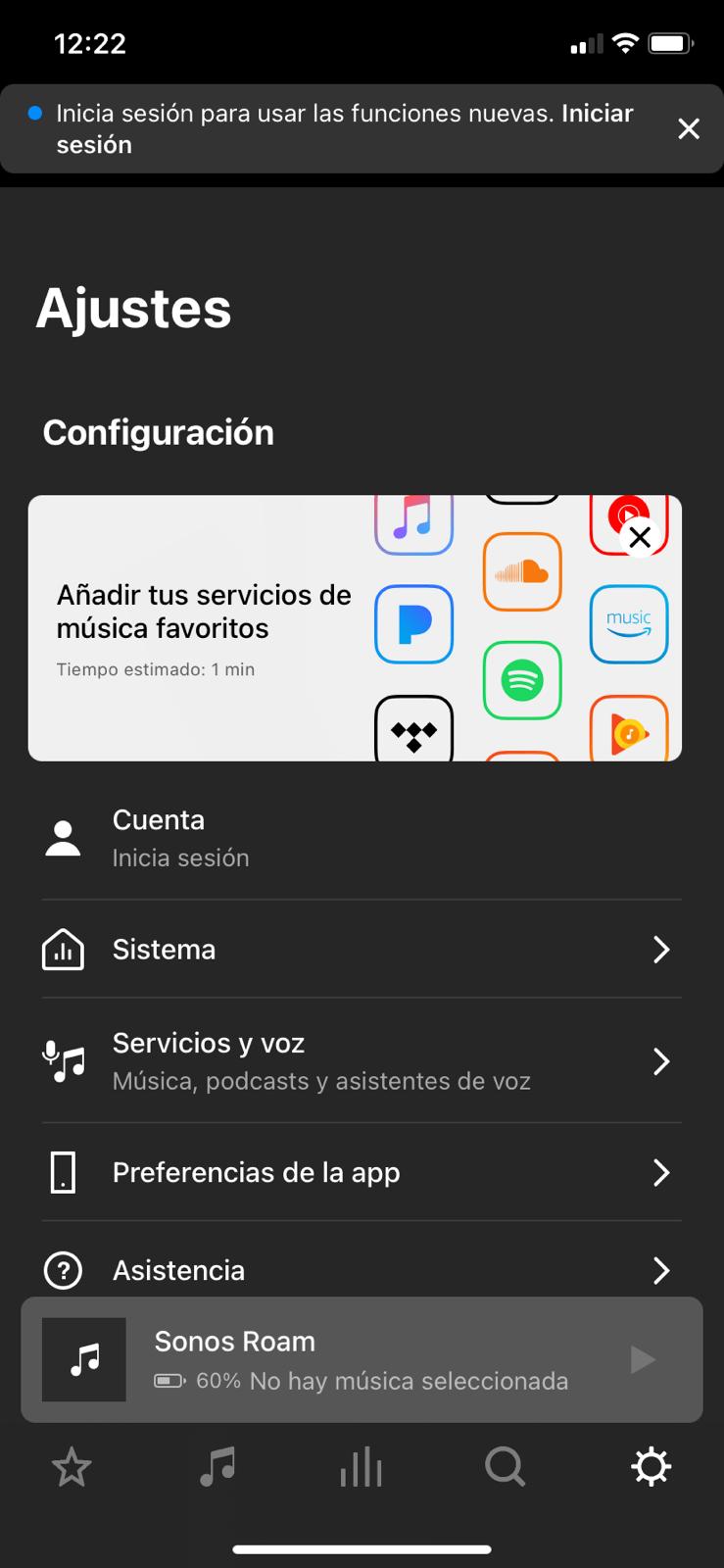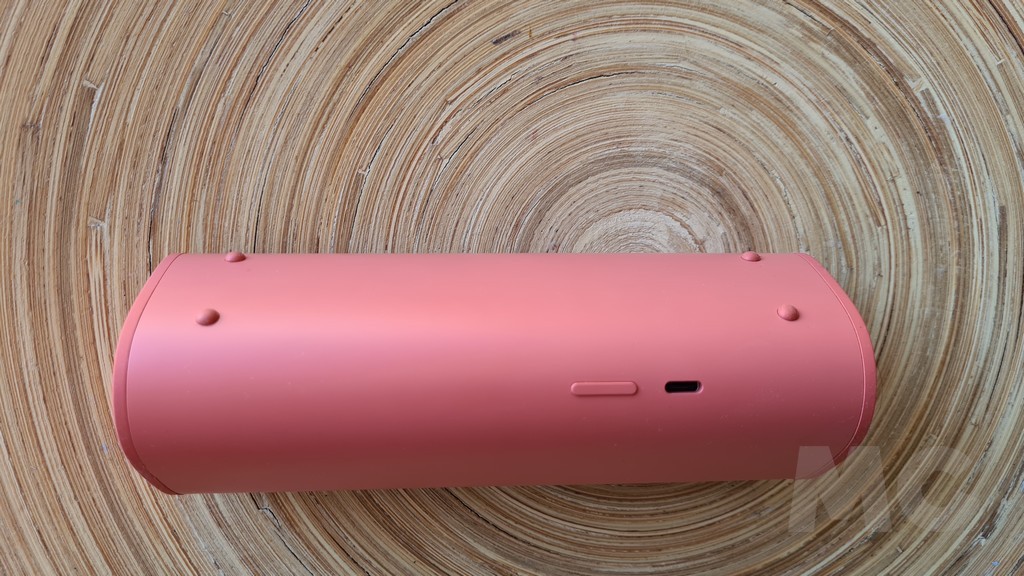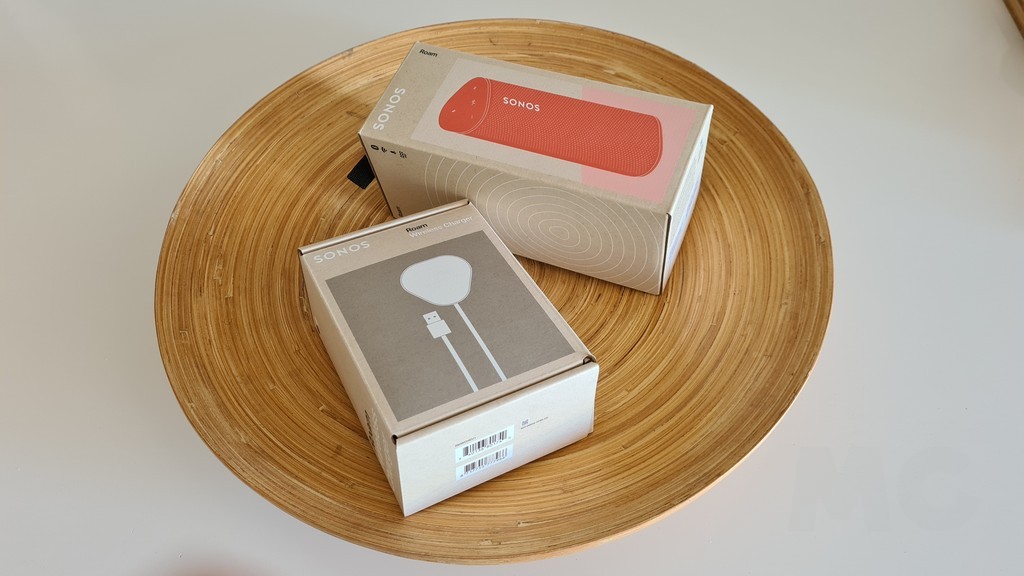
To speak of Sonos is to speak of a company that has been able to find this complex combination of technology and design in a market, that of smart speakers, in which competition is fierce. It has invested a lot of effort and investment so that both the appearance of its speakers and its performance are always at the forefront with special emphasis on its multi-room sound technology that is practically unique in the market.
That is why it is perhaps surprising that until the arrival of the Roam model, Sonos had not yet launched a truly portable speaker oriented to outdoor listening when most of the competition has some solution of this type in its catalog. We have had the opportunity to test this new Sonos Roam to check its features and design.
The first meeting point is the box. Actually the boxes since Sonos has sent us a useful wireless charging base with the speaker with magnetic support, so that we can charge the speaker without having to rest it on it. Both boxes are made from recycled cardboard and curiously have a handle to hang it from a belt or similar solution in textile material. This partly compensates for the absence of handles on the speaker itself.
| Amplifier | Two class H digital amplifiers |
| Number of controllers | 2 (16mm tweeter and mids) |
| Compatibility | Amazon Alexa, Google Assistant, Apple AirPlay 2 |
| Dimensions | 168 x 62 x 60mm |
| Dust / splash resistance | IP67 |
| connectivity | WiFi 802.11b/g/n/ac, Bluetooth 5.0, NFC |
| Drums | Autonomy up to 10 hours of use |
| Weight | 900 grams |
| Price | €199 |
When opening the box of the Roam we find the usual and very careful Sonos packaging. The loudspeaker is wrapped in a white cloth closed by a sticker and therefore easy to open. In the box we also find a USB C power cable but not a charger. Instead, in the wireless charger box, one is provided.
compact design
The design of the Roam is elongated and compact in the shape of a triangle with rounded corners on the side. The grille that hides the active elements of the speaker occupies the front part while on the two remaining sides four silicone protrusions have been placed that work as supports so that the speaker is stabilized and does not move and on the other side is the power button. Bluetooth power/pairing and the USB-C charging connector.
The Roam is available in five colors: Black (Shadow Black), White (Lunar White), Red/Orange (Sunset), Blue (Wave) and Green (Olive). For its part, the wireless charger can be purchased in white or black. It has a contained weight although it cannot be considered ultralight with its 429 grams. An interesting detail is its IP67 resistance to liquids and dust classification, which means that it can be submerged in water for up to 30 minutes at a depth of one meter.
The sides of the Sonos Roam are made of silicone rubber to resist shocks. On one of these sides are the touch controls with which we can raise and lower the volume. The pause or resume playback button also serves to go to the next or previous track but also allows us to group with other Sonos speakers or change playback to the closest grouped speaker.
Intelligent
Next to the microphone button is a light that indicates what mode the speaker is in. If the light is on we can use Amazon or Google voice control and the Trueplay function is working. If the light is off we will only have to press the button to activate the voice functions or keep it pressed to use these functions and then deactivate them.
The configuration of the Sonos Roam is done, as with all the brand’s speakers, with the Sonos mobile application available for both Android and iPhone. It is also possible to pair it directly via Bluetooth using the button that we have already mentioned. However, and unlike other competing speakers, to activate this function we will inevitably have to install the app.
The configuration of the App with the speaker is not the easiest and sometimes requires several attempts and even a factory reset of the speaker. It must be said that configuring the system with the application has a reward, the first one that we will fully enter the Sonos ecosystem, so if we already have a multi-room playback system of the brand we can take advantage of it with our little Roam.
This means that we can pair it with other speakers for stereo playback, sharing each channel on one speaker, play the same music on all the speakers in the house or play the same music on the speaker in the room to which we move. The second advantage is the ability to configure the Sonos Roam as a voice assistant, being able to choose between Alexa and Google.
Compatibility
We can also configure playback services such as Spotify for playback over WiFi. It is interesting to point out that once the mobile is paired with the speaker, it does not reproduce all the sound of the device but only what we want it to reproduce. For example, we can play songs on Spotify through the speaker and listen to, for example, a Twitter video on the mobile speakers without the music playing being interrupted.
The Sonos app also includes Sonos Radio which offers its own archive of music content. Curiously, it also has a series of controls to equalize the sound that is played through this application, but they are only available for Sonos Radio and not for the rest of the sound or video applications.
Charging the Sonos Roam can be done via the USB cable or via the magnetic wireless charger. According to Sonos, we can charge 50% of the battery in one hour with a cable or in two hours with the wireless charger. In our tests, the Roam’s battery has been depleted in an average of six to seven hours, depending on the type of connection (Wifi or Bluetooth) and the volume. According to the manufacturer, we could reach 10 hours of playback in ideal conditions.
Adaptable
The Sonos Roam has a system called Sonos Trueplay that uses the microphone to automatically adjust the playback parameters to the characteristics of the room, taking into account walls, furniture and other obstacles. This system however, in addition to others, are not available if we play via Bluetooth. In short, it is necessary to use the app and the WiFi connection to get the most out of the speaker.
In addition, and although the speaker has a microphone, the Bluetooth connection does not allow you to answer phone calls. If there is no WiFi connection available, Bluetooth is the only alternative. We can connect a Bluetooth device by pressing and holding the power button, then the speaker light will flash blue and make a sound. That’s when we can detect the speaker as a Bluetooth device and pair it.
In the sound quality tests we have followed the manufacturer’s instructions leaving 2.5 centimeters away from the wall and we have tried different situations, supporting the speaker on different surfaces. We have also placed the speaker in a horizontal and vertical position, although in our tests the horizontal position has been revealed as the best, especially to take advantage of the bass reinforcement provided by the vibration of the surface on which we support it…
The speakers that the Sonos incorporates are a tweeter for high frequencies and a woofer designed for medium frequencies. It is a normal choice for speakers of this size and that tends to sacrifice low frequencies, but the design and construction that Sonos has applied to the Roam makes it achieve good performance even in the low frequency range.
quality sound
The clarity of the sound has left us a very good impression, although in the low frequency area it slacks a bit, it does not lack punch, much less, especially considering its size. However, it is immediately evident that what Sonos has taken care of the most are the medium frequencies where we will not lose nuances even if we turn up the volume a lot.
That’s one of the nice surprises about the Roam, by the way: it’s capable of quite loud sound volume while keeping distortions at bay, which is very useful for a speaker that has to show off its talents outdoors. In the area of treble tones it also shows quite a bit of clarity, although some brilliance is lost at times. In any case, you can recognize the footprint of the sound quality that the brand’s speakers usually offer in a size that they are not used to.
Conclusions
Sonos has entered the portable outdoor speaker market with a very interesting product. It has been a success to integrate the Sonos Roam into the ecosystem and make it compatible with the brand’s multi-room and multi-speaker system, since it gives it significant added value that will be appreciated above all by those who are users or who intend to be.
As a portable speaker, it fully meets expectations, although its price range is on the high side, which, on the other hand, is also common for the brand’s products. Its design is really nice and the touch and operation of the controls is impeccable. It remains to be seen the durability that due to construction quality should be good but that would have to be experienced.
ABSTRACT
The Sonos Roam delivers the manufacturer’s sound quality and technical advances in a portable, water- and dust-resistant speaker.
Design and build quality9
